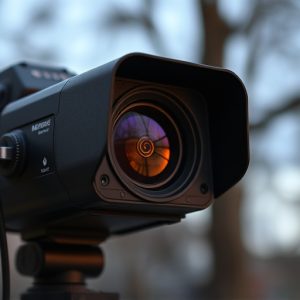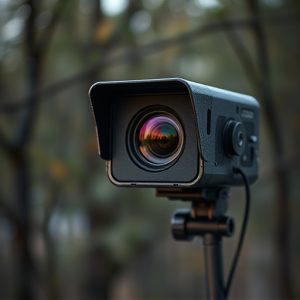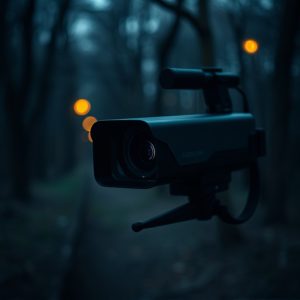Pinhole Camera Installation: Top Spots & System Components Explained
Pinhole cameras offer a discreet and energy-efficient solution for long-term surveillance, with supe…….
Pinhole cameras offer a discreet and energy-efficient solution for long-term surveillance, with superior battery life spy camera comparison to traditional models. Their low-tech design allows for creative placement, making them ideal for covert observation in homes or offices, while capturing high-quality images. In contrast to modern spy cameras, pinhole systems prioritize extended battery life and simplicity, ensuring continuous monitoring without frequent recharging, even in remote areas.
“Uncover hidden perspectives with a pinhole camera installation—a discreet surveillance solution. This comprehensive guide navigates the art of strategic placement, from indoor secrets to outdoor landscapes. Discover the key components that constitute these miniature marvels and learn about battery life considerations, vital for long-term surveillance.
We delve into a Spy Camera Comparison, focusing on resolution, night vision, and motion detection features, ensuring optimal performance without sacrificing battery longevity—a critical aspect when it comes to these discreet devices.”
- Understanding Pinhole Camera Installation
- – What is a pinhole camera?
- – Key components of a pinhole camera system
- Common Locations for Pinhole Camera Placement
Understanding Pinhole Camera Installation
Understanding Pinhole Camera Installation
When it comes to pinhole camera installation, location is key. Unlike traditional cameras that require complex setups and power sources, pinhole cameras are designed for discreet and simple deployment. Ideal locations include hidden corners in offices or homes, where they can capture evidence without being noticed. These tiny yet powerful devices offer a significant advantage over battery-powered spy cameras in terms of longevity and stealth, making them perfect for long-term surveillance needs.
In a Battery Life Spy Camera Comparison, pinhole cameras stand out due to their energy efficiency. They rely on minimal power and can operate for extended periods without requiring frequent recharging or replacement of batteries. This makes them ideal for remote or hard-to-reach areas where access for maintenance is limited. Their compact size also allows for creative placement, ensuring you capture the desired footage while maintaining a low profile.
– What is a pinhole camera?
A pinhole camera is a simple, yet ingenious device that has been used for centuries to capture images without the need for a complex lens system. Unlike traditional cameras, it relies on a tiny hole—a “pinhole”—to project an image onto a light-sensitive surface, typically film or a digital sensor. This analog photography method offers a unique aesthetic and has gained popularity among artists and hobbyists alike.
When considering a pinhole camera for installation, one of the key advantages is its discreet nature. Unlike high-tech spy cameras with lengthy battery lives, a pinhole camera is virtually invisible to the naked eye, making it an excellent choice for covert observation or artistic installations. This simplicity also translates to reduced power consumption, ensuring longer battery life compared to more sophisticated hidden cameras on the market. In terms of comparison, a standard battery life spy camera might offer a few days of continuous operation, while a pinhole camera can often capture numerous images on a single charge due to its low-power design.
– Key components of a pinhole camera system
A pinhole camera system consists of several key components that work together to capture high-quality images discreetly. The core element is, of course, the pinhole lens—a tiny opening that allows light to enter and project an inverted image onto a sensor or film. This intricate design ensures a compact and lightweight setup, ideal for covert operations.
Accompanying the lens are essential accessories like a battery, memory storage, and sometimes, wireless transmission capabilities. Modern spy cameras often prioritize extended battery life to enable longer-lasting surveillance. When comparing pinhole cameras, factors such as resolution, video quality, and of course, battery life play a significant role in determining their suitability for various applications.
Common Locations for Pinhole Camera Placement
Pinhole cameras, with their discreet nature and exceptional battery life, offer a unique advantage in terms of placement. Unlike traditional spy cameras, they don’t require constant power for recording, making them ideal for long-term surveillance. This makes common locations for installation diverse, ranging from hidden corners in homes to concealed spots outdoors. In residential settings, attics, closets, or even behind paintings can provide optimal positions, ensuring privacy while capturing high-quality footage. For outdoor applications, pinhole cameras can be strategically placed under decks, inside garden sheds, or affixed to trees and fence posts, offering a discreet way to monitor entry points and property boundaries.
When comparing battery life across spy cameras, pinhole models stand out due to their energy-efficient design. This feature is particularly beneficial for remote locations where regular power sources are unavailable. Their longevity allows for continuous monitoring without the need for frequent replacements or recharges, making them a versatile option for both indoor and outdoor surveillance needs.
When selecting a location for your pinhole camera, consider areas that offer discreet access and natural lighting. Common spots include outdoor gardens or fences, windowsills, and even ceiling corners in warehouses or offices. For those seeking long-lasting surveillance, choosing models with extended battery life can be a game-changer, ensuring continuous operation without frequent replacements. In terms of a spy camera comparison, pinhole cameras stand out for their compact size and ability to capture high-quality images discreetly.


